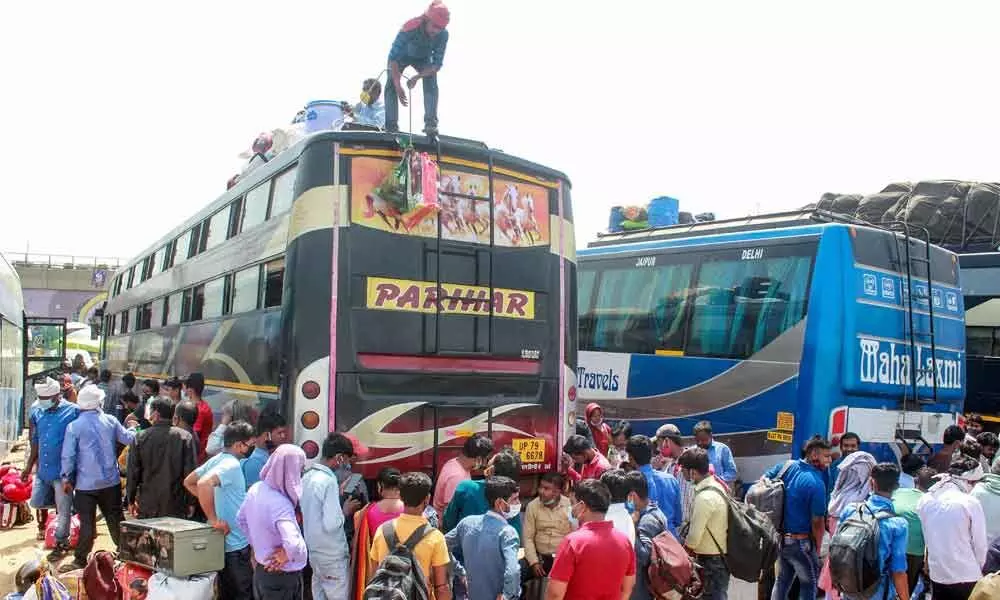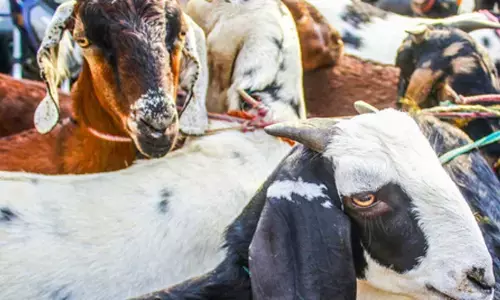2nd wave threat to economic recovery: Moody's

Migrant workers board buses to leave for their native places in Gurugram
Mumbai: The second wave of coronavirus is credit-negative and poses threat to economic recovery in India, according to global rating agency Moody's.
The second wave of infections presents a risk to growth forecast as the re-imposition of virus management measures will curb economic activity and could dampen market and consumer sentiment.
However, given the focus on 'micro-containment zones' to deal with the current wave of infections, as opposed to a nationwide lockdown, the impact on economic activity will be less severe than that seen in 2020.
India's very low coronavirus death count (only about 170,179 deaths have been recorded as of April 12) and relatively very young population also help mitigate risks.
Gross Domestic Product (GDP) is still likely to grow in double digits in 2021 given the low level of activity in 2020.
Retail and recreation activity across India had dropped by 25 per cent as of April 07, 2021 compared to February 24, 2021, according to Google mobility data.
This was mirrored in the Reserve Bank of India's March consumer confidence survey which showed a deterioration in perceptions of the economic situation and expectations of decreased spending on nonessential items, it added.
Vaccination will be a key element in managing the second wave as authorities' balance virus management against maintaining economic activity.
India began its vaccination drive in mid-January and had administered 100 million doses of the coronavirus vaccine as of April 10, becoming the fastest country to reach that threshold so far.
However, a shortage of vaccines and India's nearly 1.4 billion population, which includes many people living in rural, more remote locations, could slow progress of the vaccine rollout.
As of early April, around 7% of the population had been inoculated.
















